THROUGH THE LENS: Arrivals’ Day at AirShow London 2016
Story and photos by Barry Griffiths
October 26, 2016
One of the largest and best airshows in Canada returned to London International Airport, Ontario after a hiatus of 12 years, and it brought together an impressive array of military aircraft and civilian-owned warbirds. This long anticipated airshow celebrated “The 75th Anniversary of the British Commonwealth Air Training Plan (BCATP)” and was headlined by three internationally-renowned demonstration teams, the RCAF 431 Squadron “Snowbirds” from CFB Moose Jaw, SK, the RCAF CF-18 Hornet Demo Team from CFB Cold Lake, AB and the USAF F-22A Raptor Demo Team from JB Langley-Eustis, VA.
The Arrivals’ Day of an air show has always been favoured by aviation photographers as it is the day when most of the visiting aircraft are checked in and there are many opportunities to observe and photograph some rare and unusual aircraft before the actual show begins.
The London Arrivals’ Day proved to be no exception as it opened early in the day with clear blue skies along with a few puffy white clouds. The group of 70-80 international photographers were positioned in the large photo pit, located on a grassy corner adjacent to the taxiways and across from the hot ramps. It was a great location to catch the arriving aircraft as they taxied to their ramp positions and, being at the centre of the show line, it placed everyone in a good position for back-lit ground-to-air shots of the aerobatics, banked photo passes, loops and rolls, high and low speed fly-bys as well as the elegant banana passes by the two signature Heritage Flights. In addition, many of these incoming static and performing aircraft perform circuits, fly-bys and fast breaks before finally landing; something one can’t count on seeing when the air show is actually on.


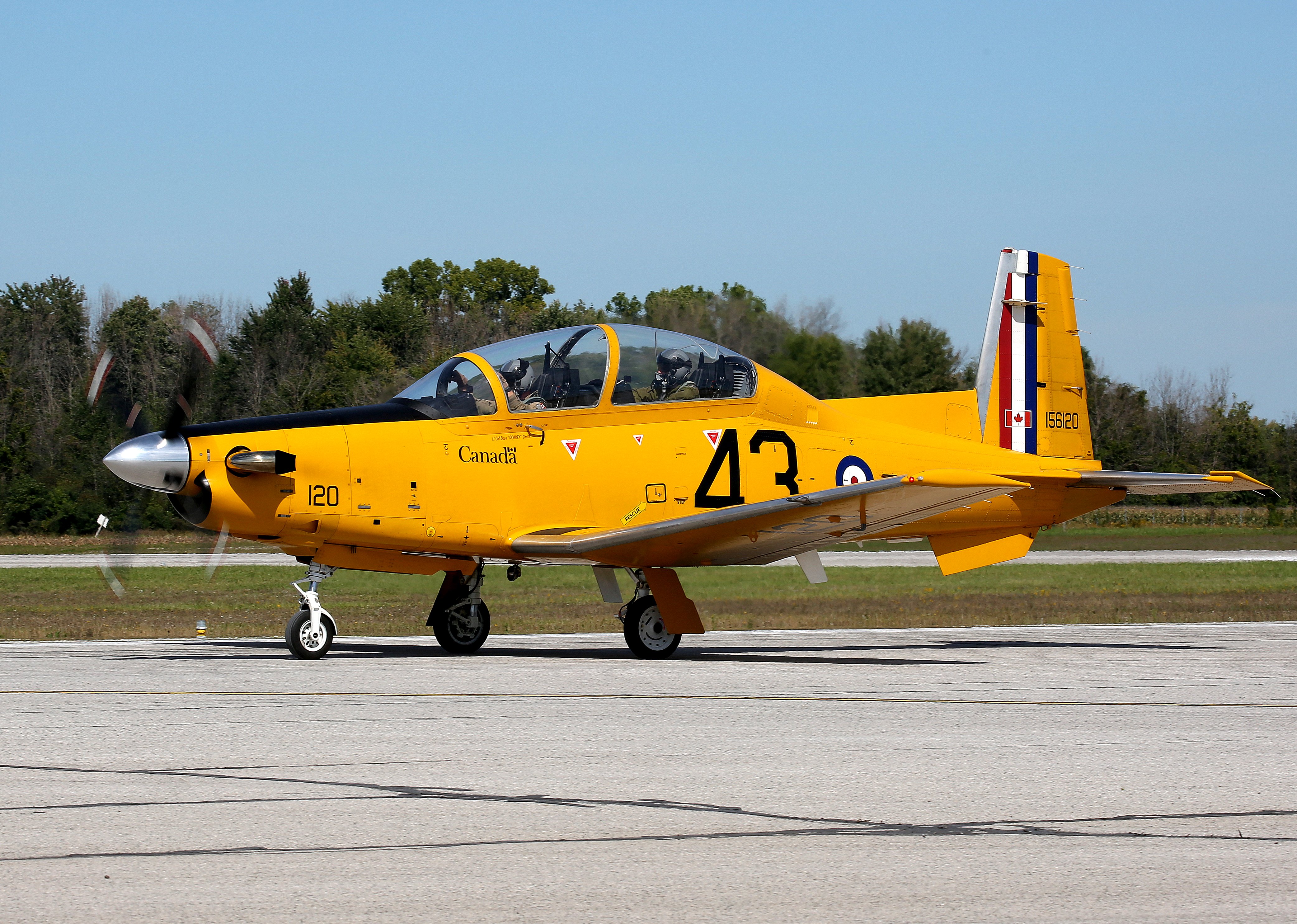
The day is roughly divided into three parts; the arrival of most of the expected aircraft in the morning, followed by the airshow performers running their practices in the afternoon and then, to cap off a rather intensive day, the “Hour of Power” starts in the early evening.
One of the more interesting arrivals for me was the triple-tailed, bug-eyed Grumman OV-1 Mohawk, a twin-engine turboprop armed military observation and attack aircraft that served in Viet Nam and was operated by the US Army until 1996. This airplane looks like it was designed by a committee and has the ungainly appearance and visual characteristics of a helicopter, an airplane, and an insect all mixed together. The Mohawk appearing in London was a flying monument to Viet Nam MIA/POWs and its fuselage is covered with their names.

During the morning the RCAF’s CT-142 Dash-8, a curious looking, but somewhat familiar airframe arrived on RWY 15. This navigation trainer, adapted by Bombardier for the RCAF, has a long, thimble nose that houses a Litton APS-504 radar unit, and earned it the nickname of “Gonzo”. It remained on the static ramp throughout the airshow.

The US Navy was well-represented and brought the Boeing P-8A Poseidon, along with two E-2 Hawkeyes from NAS Norfolk, VA, to the airshow. Both “Hummers” taxied past the photo pit on arrival and gave the photographers an excellent view of their unique eight-bladed carbon fibre propellers and 24ft (7.3m) diameter rotating radar dome.
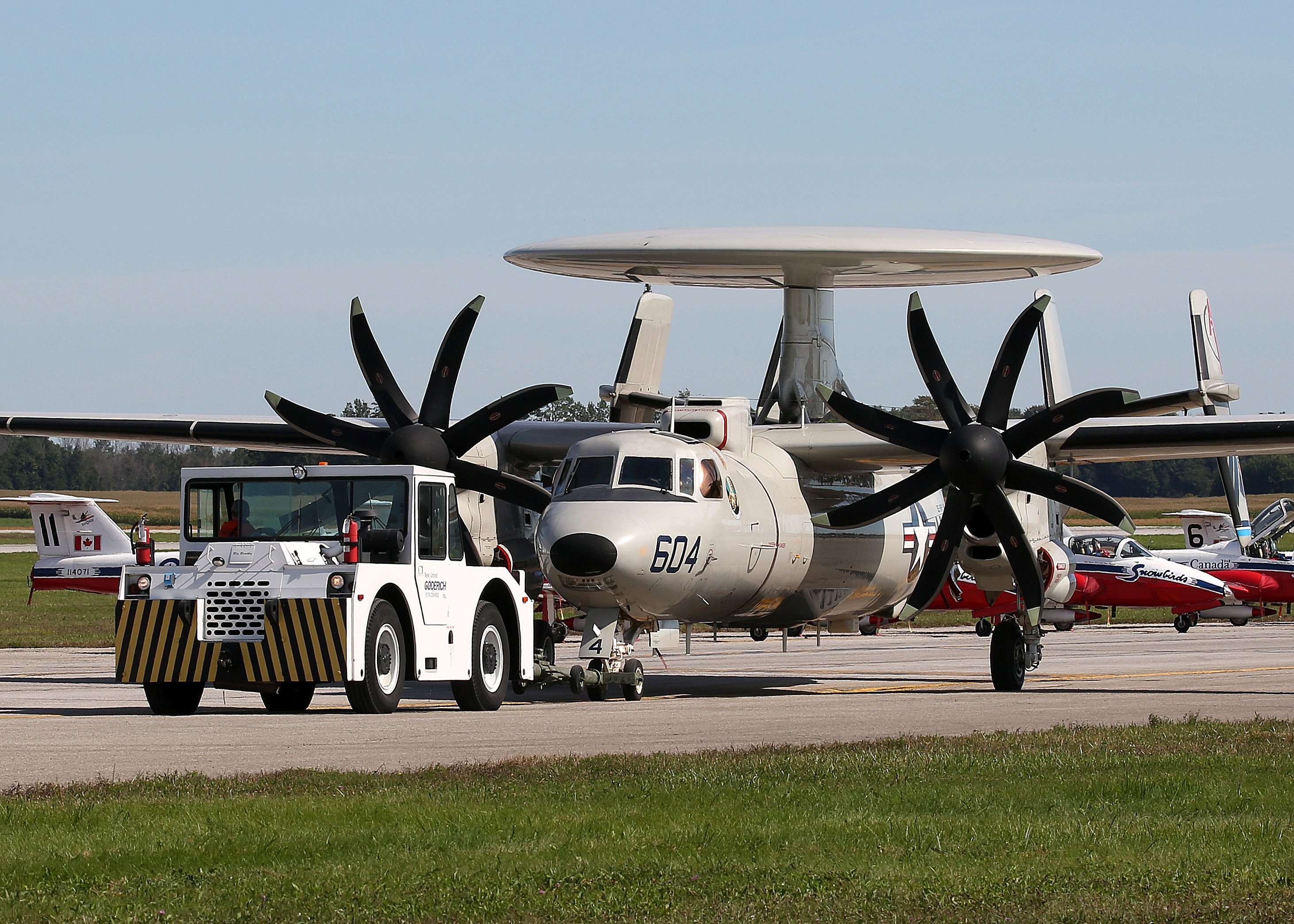
First up for the afternoon practice session was the Canadian Armed Forces Parachute Team (CAFPT) the “SkyHawks” jumping from the RCAF 436 “Tusker” Squadron’s C-130J Super Hercules. The highly skilled “SkyHawks” put on a spectacular show as they performed intricate aerobatic parachute formations with multiple parachutists, including several tandem rider drops, before landing directly in front of the photo pit. After they had safely landed, the Super Hercules came in for a series of high and low speed passes followed by a couple of slow show passes.
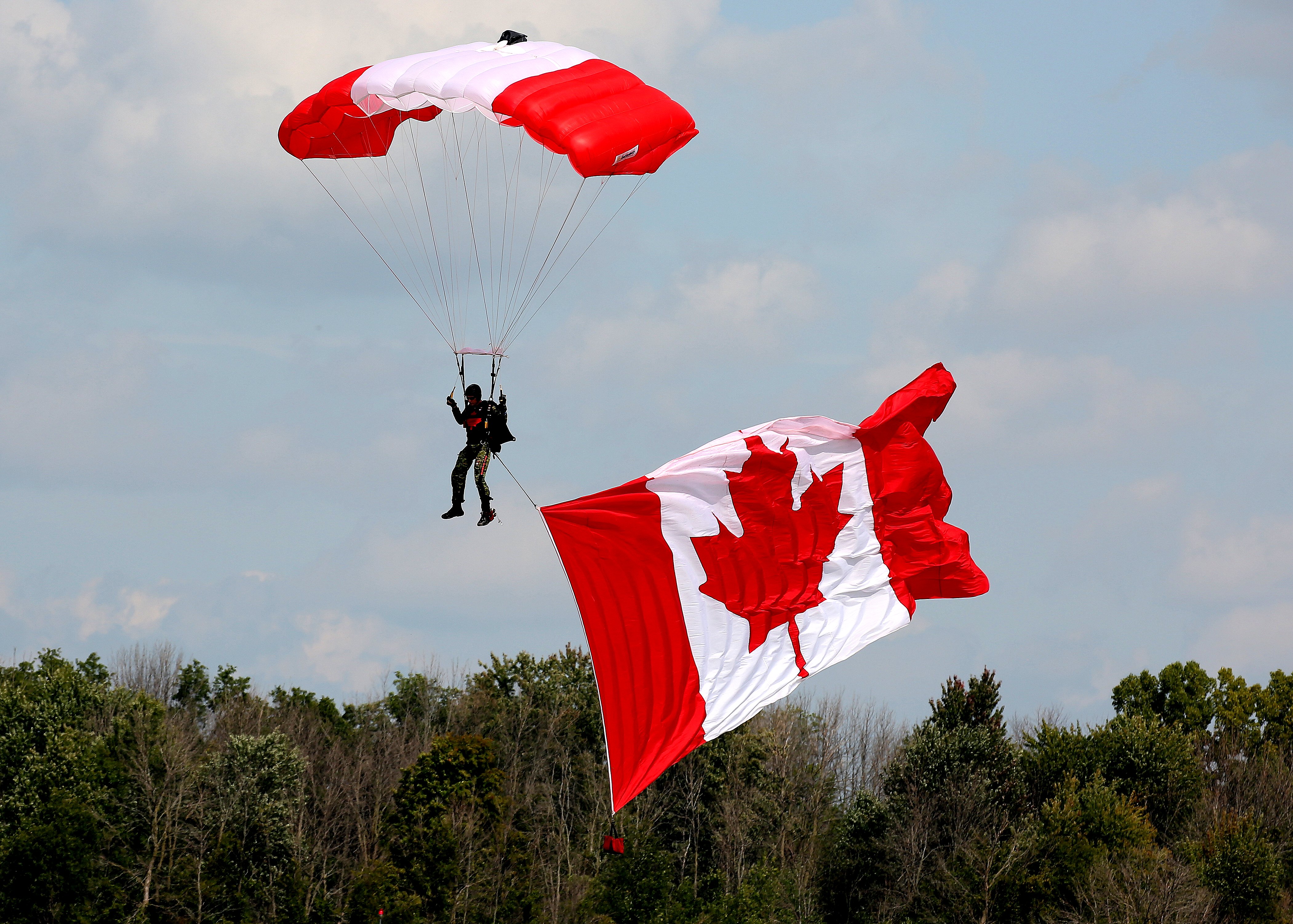

A highlight of the practice afternoon was the Heritage Flights flown by the two demonstration teams. First, the F-22A Raptor paired up with the outstanding P-51D Mustang “Double Trouble two” and after each aircraft had completed a number of solo routines, they flew together in a tight formation with some very nice slow, photographer-friendly banana passes directly in front of show centre. The RCAF Heritage Flight commemorated the BCATP with the CF-18 Hornet Demo bird alongside the CT-156 Harvard II trainer. This duo was particularly interesting as both aircraft were painted in the yellow training colours of the BCATP which created a particularly photogenic twosome. They performed a similar routine to the USAF flight and provided the assembled photographers with some great photo opportunities.


Aside from the three headliners, my favourite Arrivals’ Day performer was the Canadair CT-33 Ace Maker II, flown by Greg “Wired” Colyer from California. In an interesting touch for a Canadian air show, this beautifully restored aircraft was the last CT-33 Silver Star jet to be retired by the RCAF and, since acquiring it, Greg has upgraded it to become a prime piece of US aviation history and a tribute to the US Air Force’s first operational jet fighter. He flew twice during the day with an outstanding high performance practice routine in the afternoon and then a full routine during the “Hour of Power” to the great enjoyment of the assembled photographers.
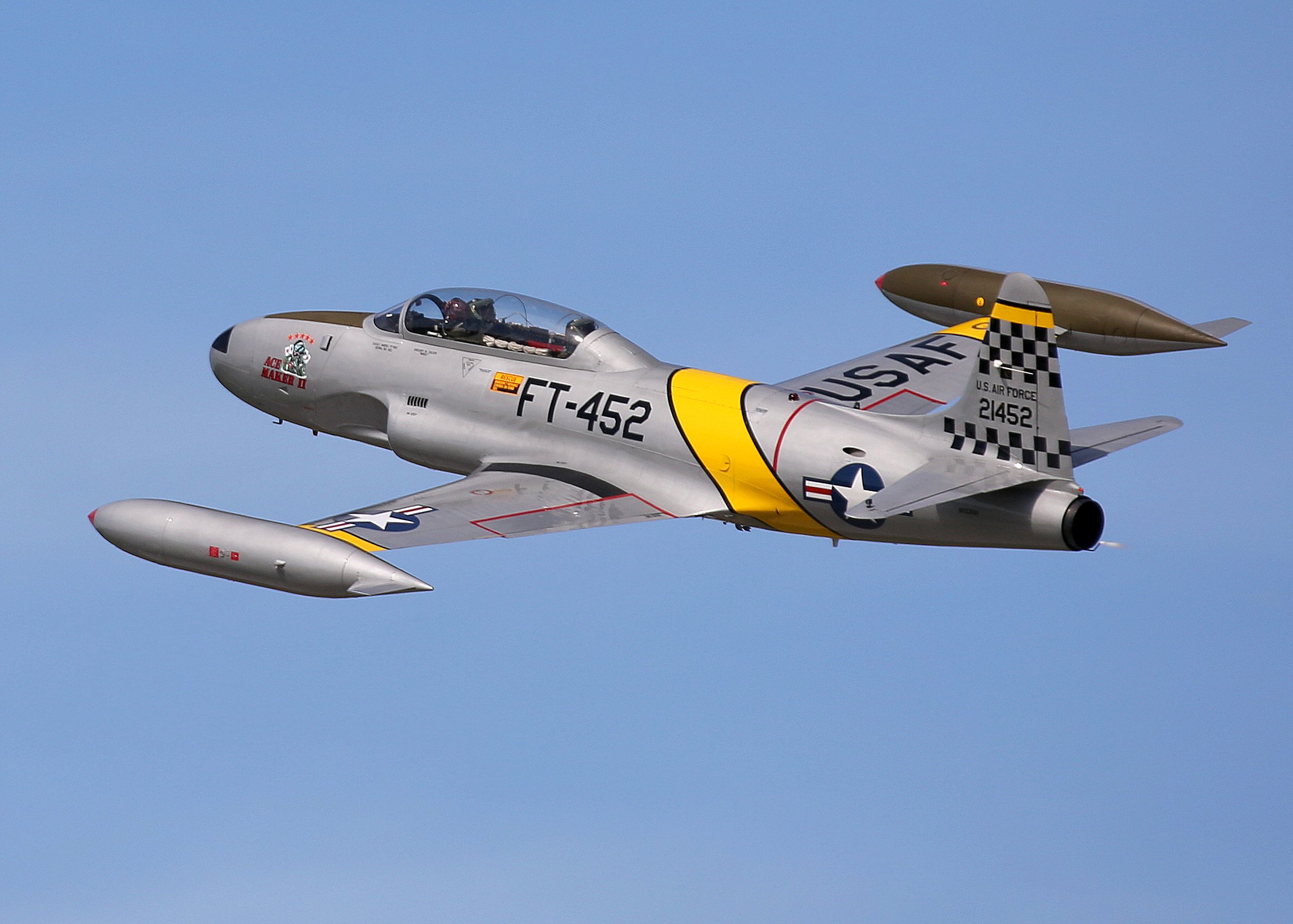

Later in the afternoon, F-16C Vipers from the Ohio Air National Guard’s 112th FS “Stingers” appeared overhead, in a tight four-ship formation, and quickly made their presence known. The formation immediately executed an impressive fast break and dropped down to ground level for a series of spine-tingling approaches and low passes with full afterburners. To cap off this exciting arrival, the Toledo-based jets taxied in and then parked adjacent to the photo pit while the pilots and maintainers went through their shut-down procedures. One notable side-bar to the squadron’s arrival was the appearance of the local Canadian Custom Officers to check the passports of the pilots. Many humorous comments abounded from the photo pit ….. “Any liquor, fresh fruit or cigarettes in your F-16?” …… “I don’t care if you are an F-16 pilot or not, do you have anything to declare?”

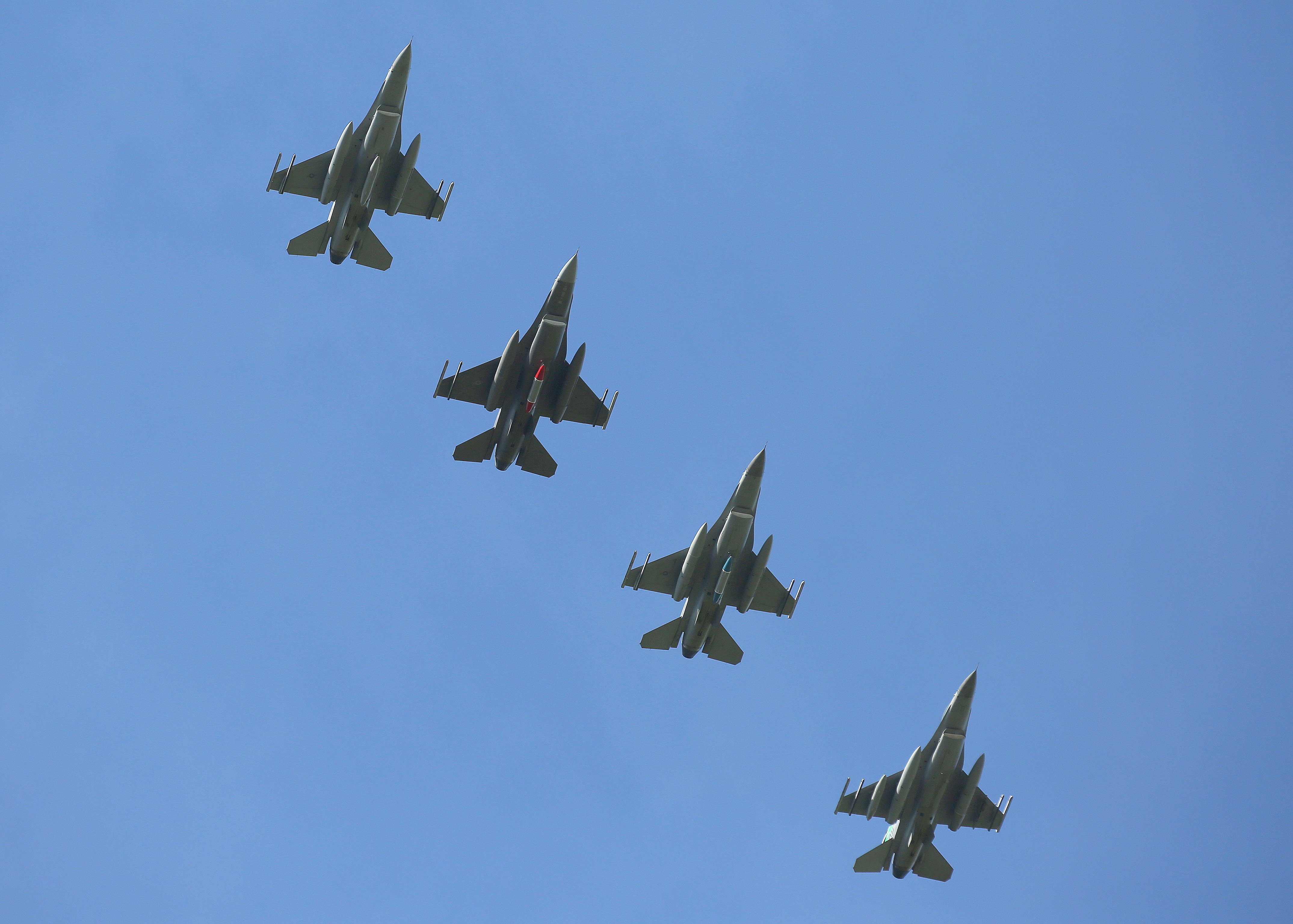
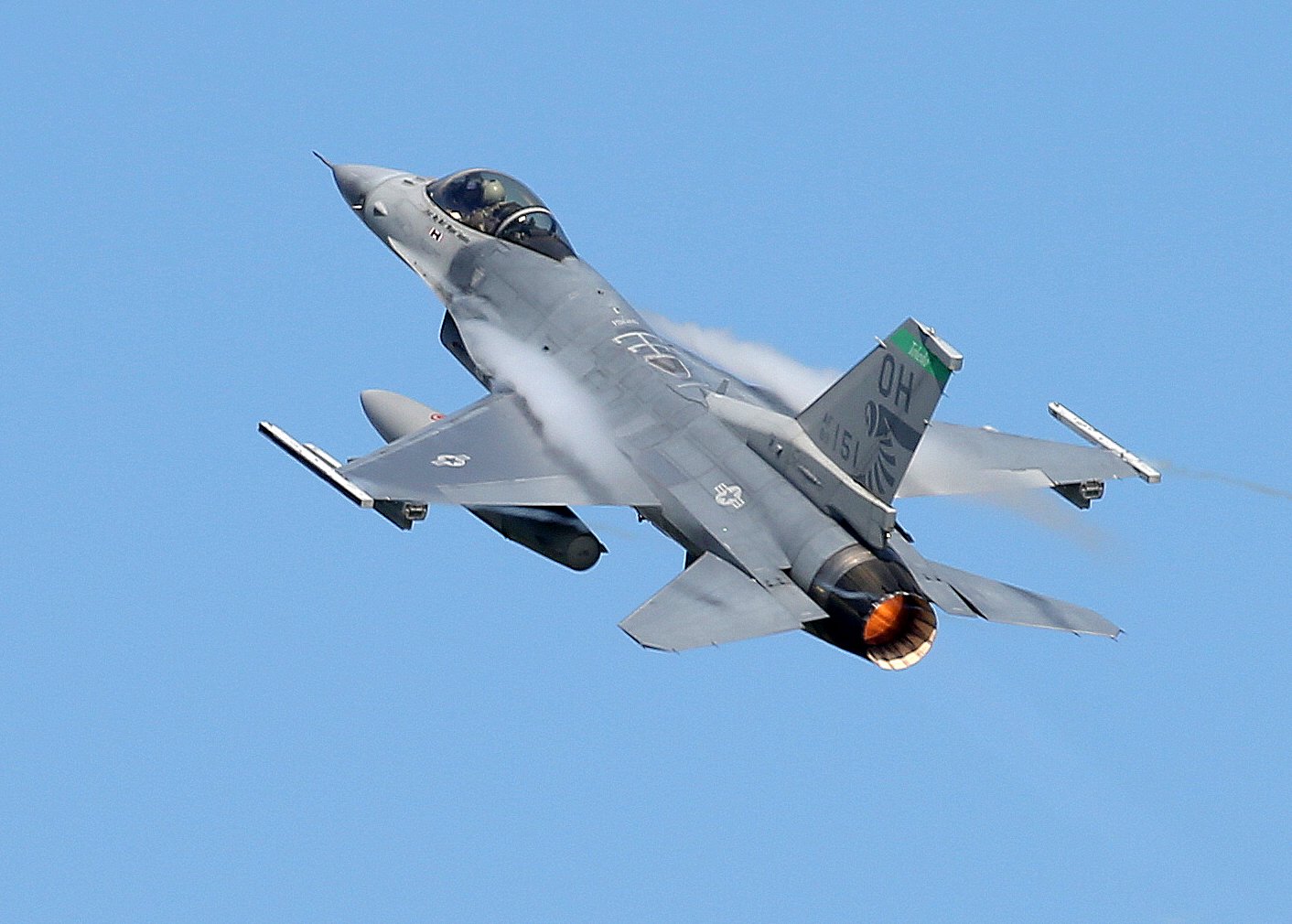

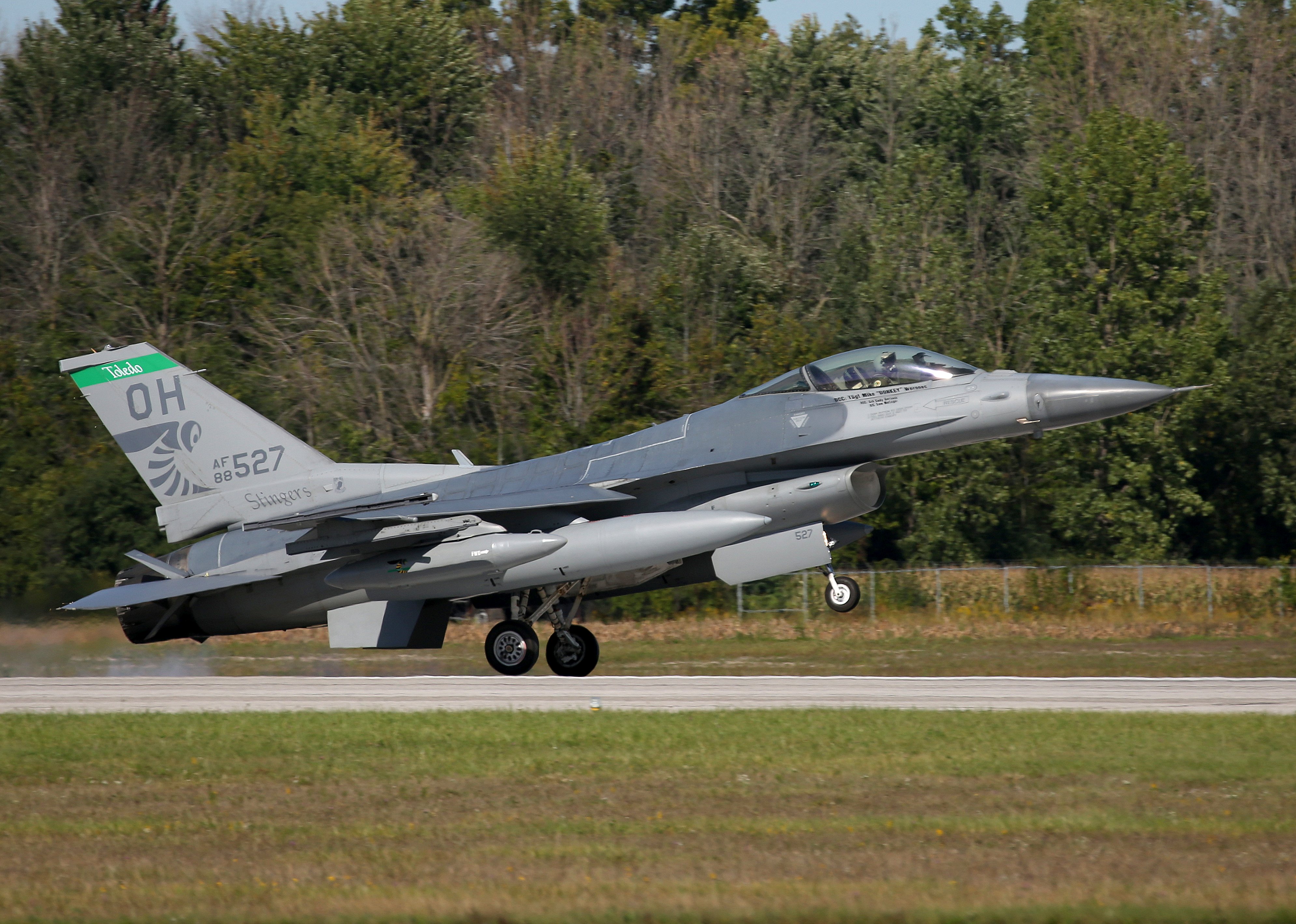
To cap off a wonderful day of aviation thrills, the “Hour of Power” took place in perfect late afternoon conditions. For a reduced price and free parking several thousand fans came to see an abbreviated, but stunning, performance by the airshow headliners. The “Hour of Power” started with a bang as an arriving three-ship formation of F-15C Eagles suddenly appeared and screamed overhead to give the spectators their first sample of raw power as they aggressively executed sharp banks, vertical climbs, high speed show passes, and touch and goes before recovering. Louisiana’s 122nd FS “Bayou Militia” from New Orleans, LA had arrived and the “Hour of Power” was officially underway.



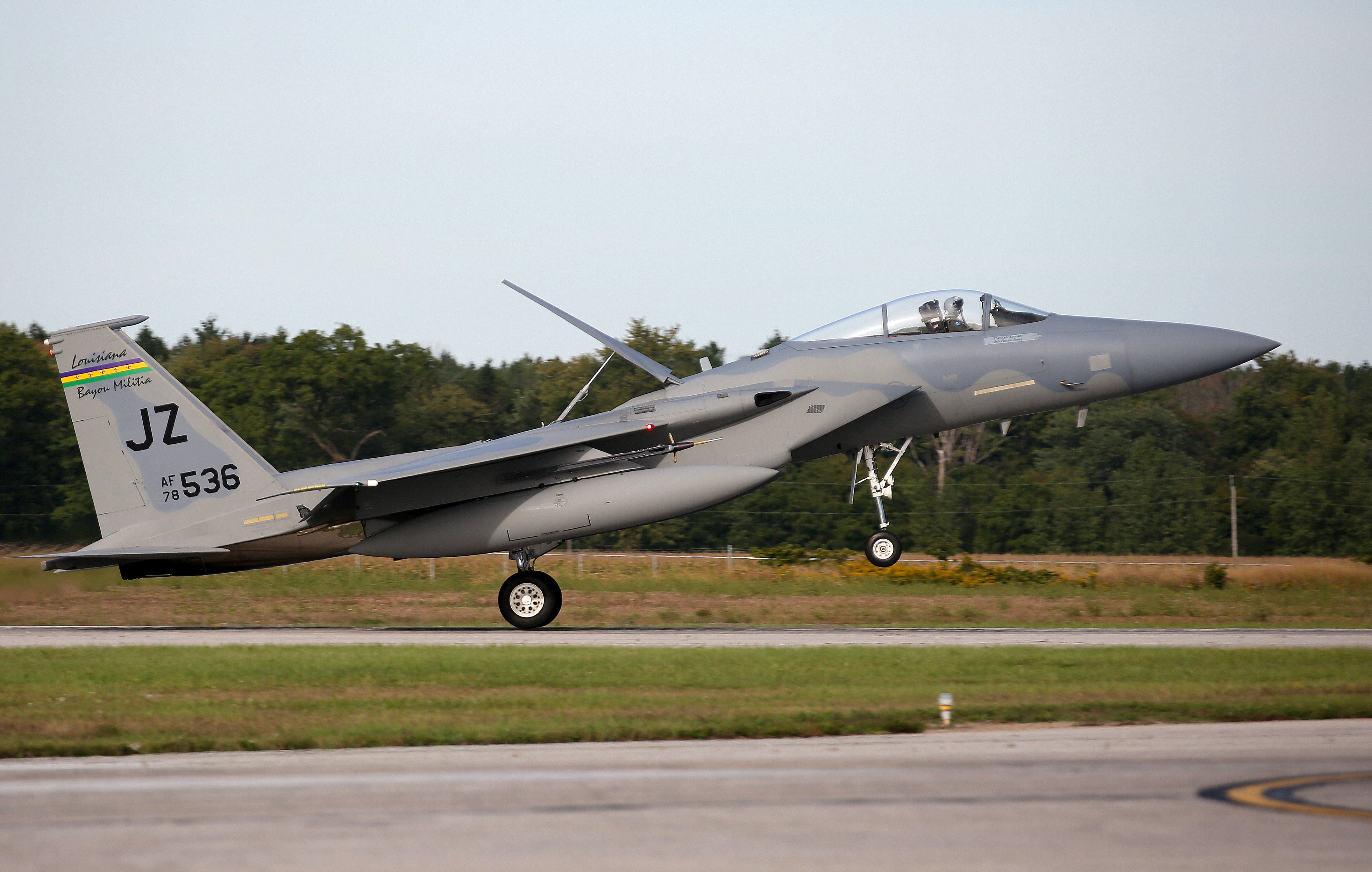
First to launch, after the Bayou Militia’s Eagles had arrived was the 94th FS’s F-22A Raptor demo bird piloted by Maj. Dan (Rock) Dickinson. This was only the second time the Raptor had appeared in a Canadian air show and Dickinson put on an incredible performance for the expectant crowd. After a very short take-off run, this amazing air-dominance jet fighter, which combines stealth, manoeuverability and jaw-dropping power, performed many precision aerial maneuvers all of which demonstrated the unique capabilities of the world’s only operational fifth-generation fighter aircraft.
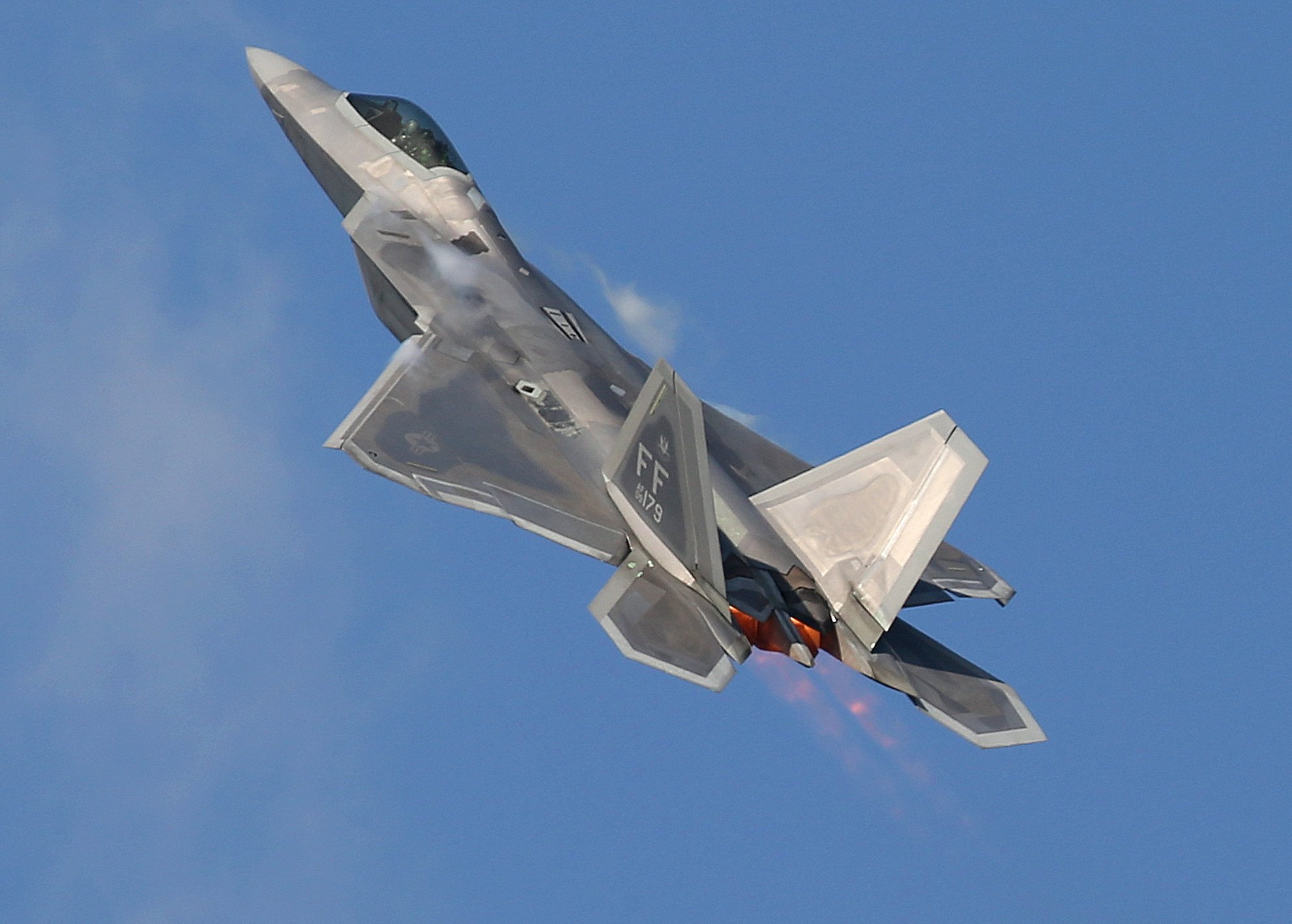


The late afternoon light began to fade as the gathering clouds turned into pinks and golds and the nine Canadair CT-114 Tutors of the RCAF’s 431 Snowbird squadron took to the air. After a rare five-abreast and four-abreast launch, the Snowbirds quickly formed up and demonstrated their aerial magic of precision formation aerobatics and stunning solo crosses. Having watched them perform on many occasions, I was struck by how the waning afternoon light enhanced the red, white and blue livery of the aircraft and highlighted their choreographed aerial ballet.




The “Hour of Power” came to an end in the fast looming sunset as the RCAF’s CF-18, Hornet, piloted by Capt. Ryan (Roid) Kean, taxied to the threshold, applied full military power, punched in the afterburners, and then launched into its signature take-off that led into a 30 degrees steep climb followed by the “Dirty Roll”. This specially painted CF-18 Hornet, which carries the historic training colours of the BCATP, was participating in its 26th show performance of the year and, because Capt. Keane was born in London and the season was nearing its end, this was a particularly significant flight for the whole team. After completing an awesome display of high and low speed aerobatics for his home crowd the Arrivals’ Day activities ended when Capt. Kean lowered his tail hook as he landed and created a spectacular shower of sparks as it dragged along the runway.



A fitting end to a long day that certainly more than met the expectations of the photo pit occupants and was a wonderful precursor to London’s first class air show.
AIR SHOW PERFORMERS
RCAF Snowbirds
RCAF CF-18 Hornet Demo Team
RCAF CC-150 Polaris with 2 x CF-18 Hornet Flyby
RCAF Canadian BCATP Historical flight: CF-18 and Harvard II in BCATP livery
Canadian Armed Forces Parachute Team – The SkyHawks, with CC-130J Hercules
USAF F-22A Raptor Tactical Demonstration
USAF Heritage Flight: P-51D Mustang “Double Trouble two” and F-22A Raptor
Gregory “Wired” Colyer flying his Ace Maker II T-33
Pete McLeod in his Red Bull Air Racing Edge 540
USAF F-16s flyby and low high speed demonstration
BAC Jet Provost
Grumman OV-1 Mohawk
AIR SHOW STATICS
RAF KC-30 Voyager (first time in Canada)
USAF KC-135R Stratotanker
USN P-8A Poseidon (first time in Canada)
USAF RC-135 Rivet Joint
USAF B-1B Lancer (rarely seen in Canada)
Canadair T-33
USN T-6A Texan II
USN T-45C Goshawk
Harvard MK 4
RCAF CH-139 Jet Ranger
RCAF Bell 412
US Navy MH-60 Seahawk
US Navy MH-53 Sea Dragon
Antonov AN-2 biplane
USN E-2C and D Hawkeyes
USN C-2 Greyhound
USAF LA-ANG F-15C
USAF OH-ANG F-16C
USCG HH-65C DOLPHIN
RCAF CT-142 Dash-8
AirShow London 2016 Arrivals’ Day Photo Gallery
Barry Griffiths is a published author, wildlife photographer and naturalist. After a successful career as an educator, he became founder and President of Quest Nature Tours, a company specializing in worldwide nature tours and expedition cruising. On his retirement from these endeavors, he continues to photograph wildlife and pursue his lifelong interest in all aspects of aviation.
Barry can be reached at: [email protected]


